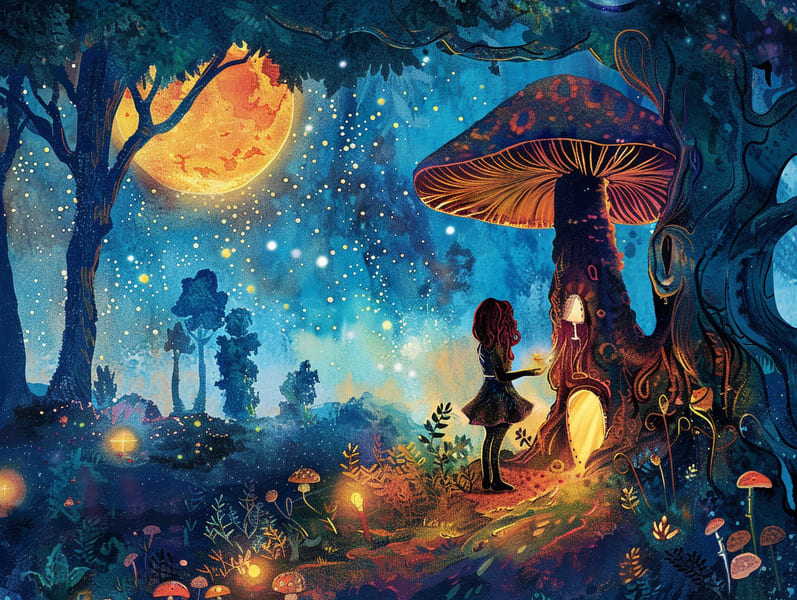Uncovering the Past of Best Fairy Tales and Their Immortal Delight.
Uncovering the Past of Best Fairy Tales and Their Immortal Delight.
Blog Article

Legendary fairy tales have enduring presence. These narratives have been shared from one generation to the next centuries before they were ever inscribed. They originated from a variety of backgrounds, including European traditions. They were initially passed along among elders, often carrying themes and messages reflective of the societal norms and beliefs of the time.
Jacob and Wilhelm Grimm, Jacob and Wilhelm (the Grimm brothers), were among the first to compile many of these beloved stories. Their compilation, "Grimm's Fables," included classics like "The Story of Cinderella," "The Story of Hansel and Gretel," and "Schneewittchen," which have since become hallmarks in the world of children's fairy tales. Similarly, H. C. Andersen's whimsical tales, such as "The Mermaid," and "The Duckling that Could," have gained the love worldwide, ensuring their place in the pantheon of classic fairy tales.
Though they are centuries old, these stories remain as applicable as ever, especially as bedtime stories for kids. These enchanting tales are now available in multiple formats, including artistically illustrated books, enchanting animations, and digital fairy tales.
Their lasting appeal can be linked to several captivating elements:
Important Morals: Old fairy tales often offer important moral lessons. Stories like "The Story of the Boy Who Cried Wolf" teach the benefit of truthfulness, while "The Tortoise and the Hare" underline the values of perseverance and modesty. These narratives offer the young clear distinctions between ethical and unethical, building their moral compass in a gentle yet important way.
Sympathy and Perception: Timeless fairy tales frequently portray beings facing difficulties and adversities, encouraging young listeners to understand with their struggles and root for their triumphs. For instance, "The Tale of Beauty and the Beast" shows us the merit of looking beyond appearances to see the inner spirit of a soul, building sympathy and appreciation.
Cultural Comprehension: Many traditional fairy tales are rooted in the cultural contexts from which they emerged. Exploring these tales can provide enlightening views into different social structures, fostering a sense of world insight and acknowledgment.
Inventiveness and Fantasy: The enchanted elements in traditional fairy tales—mythical creatures—provoke children’s fantasies. These narratives lead readers to fantastical realms, enlivening imaginative dreams and a sense of magic that persists a lifetime.
Timeless fairy tales are not only mesmerizing but also educational. They provide whimsical tools in strengthening various mental and emotional abilities in children. When timeless fairy tales are spoken, they advance language acquisition by showing new language and detailed sentence structures. This practice also advances listening skills and focus, as the young listen intently, anxious to see what happens next.
Furthermore, examining the themes and characters of traditional fairy tales can foster reasoning skills and reasoning skills. Children are instructed to discern patterns, foresee events, and get cause and effect. These debates also benefit children express their thoughts and feelings, fostering their emotional intelligence.
In today’s digital age, the proliferation of web-based fairy tales has made these fairy tales more accessible than ever. Websites and digital apps extend ample collections of classic fairy tales that can be read or listened through anytime, anywhere. Fairy tales recited are particularly well-liked, giving an interactive way for kids to experience these alluring stories. Audio stories and narrated videos carry characters and settings to life, often accompanied by bewitching background sounds and background music that intensify the storytelling experience.
The unfading fascination of traditional fairy tales lies in their ability to alter to contemporary times while continuing with their central messages. Contemporary modernizations of these narratives often introduce more diverse protagonists and modern settings, making them pertinent to today’s audience. However, the main ideas of valour, check it out warmth, and truth remain unchanged, continuing to touch children of all ages.
Ancient fairy tales also offer a sense of peace and knowability. They deliver up a orderly narrative with a distinct beginning, middle, and end, often wrapping up with the culmination of conflicts and the triumph of right over wrong. This regularity can be heartening for kids, granting a sense of unwaveringness in an fluctuating world.
Timeless fairy tales continue to spellbind and guide new generations, maintaining their allure and pertinence in modern society. As children's bedtime stories, they offer a perfect blend of delight and instruction, developing moral values, empathy, and creativity. The proliferation of digital fairy tales and the popularity of fairy tales voiced ratify that these traditional tales remain reachable to new generations.
By safeguarding and passing on these tales, we continue to treasure the rich tapestry of folklore and cultural heritage. Whether you are exploring a vibrantly illustrated book, viewing a internet library, or playing an voice book, the captivation of traditional fairy tales is always within reach. These tales illustrate of the timeless ability of stories and its ability to join us across generations and cultures.
Be it you are browsing a gorgeously illustrated book, enjoying a cyber library, or playing an audio story, the magic of old fairy tales is always within reach.
These tales teach us of the steadfast presence of fairy tales and its ability to connect us across generations and cultures, making a tie that enchants and educates alike.